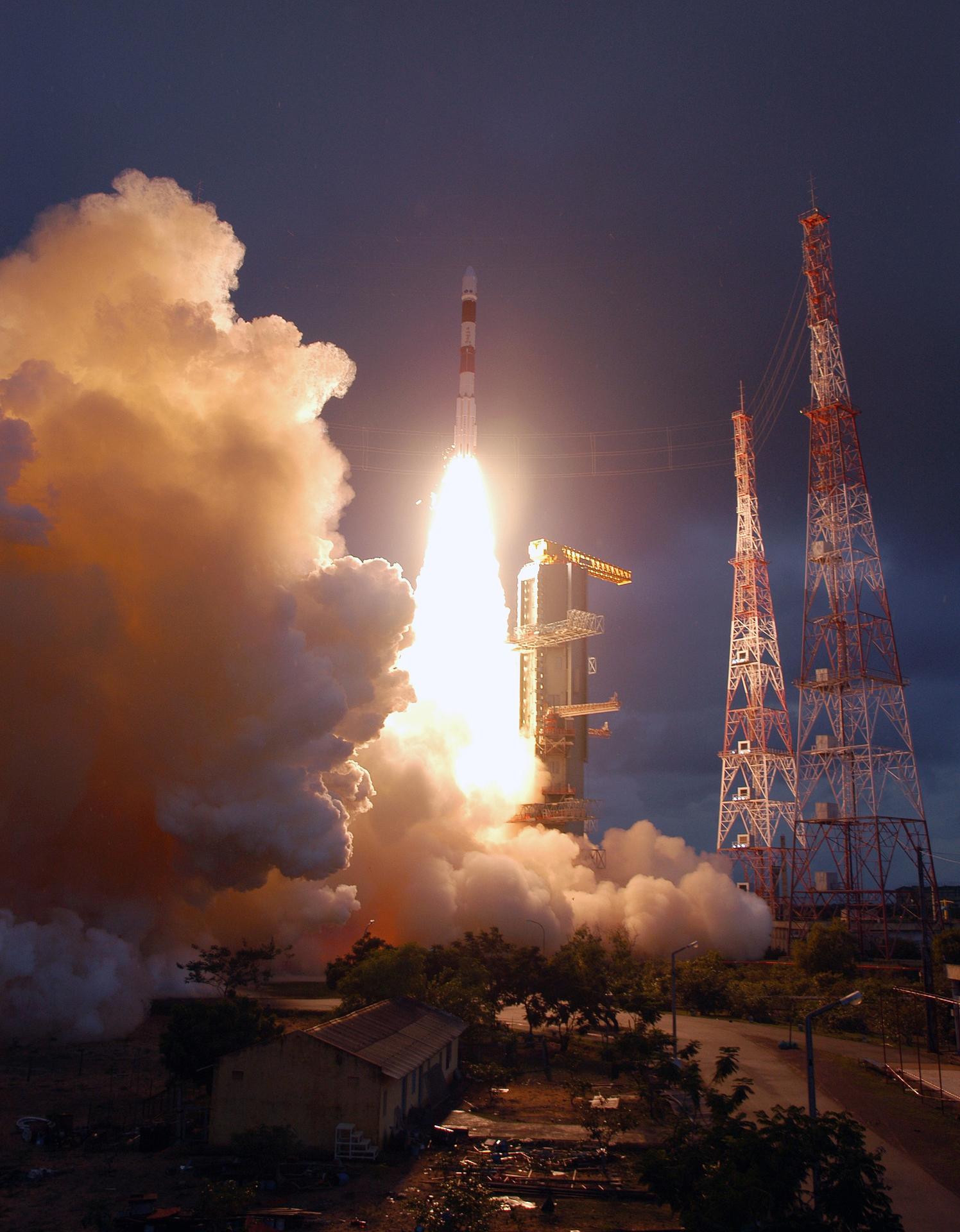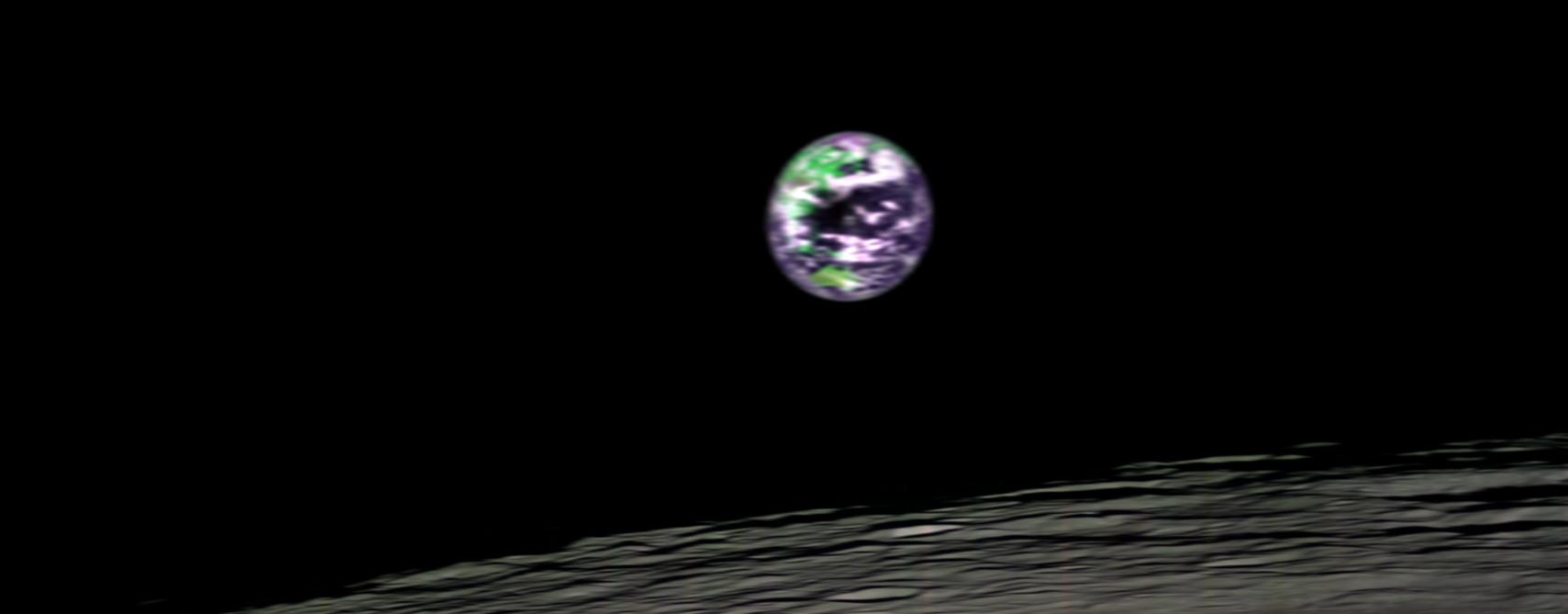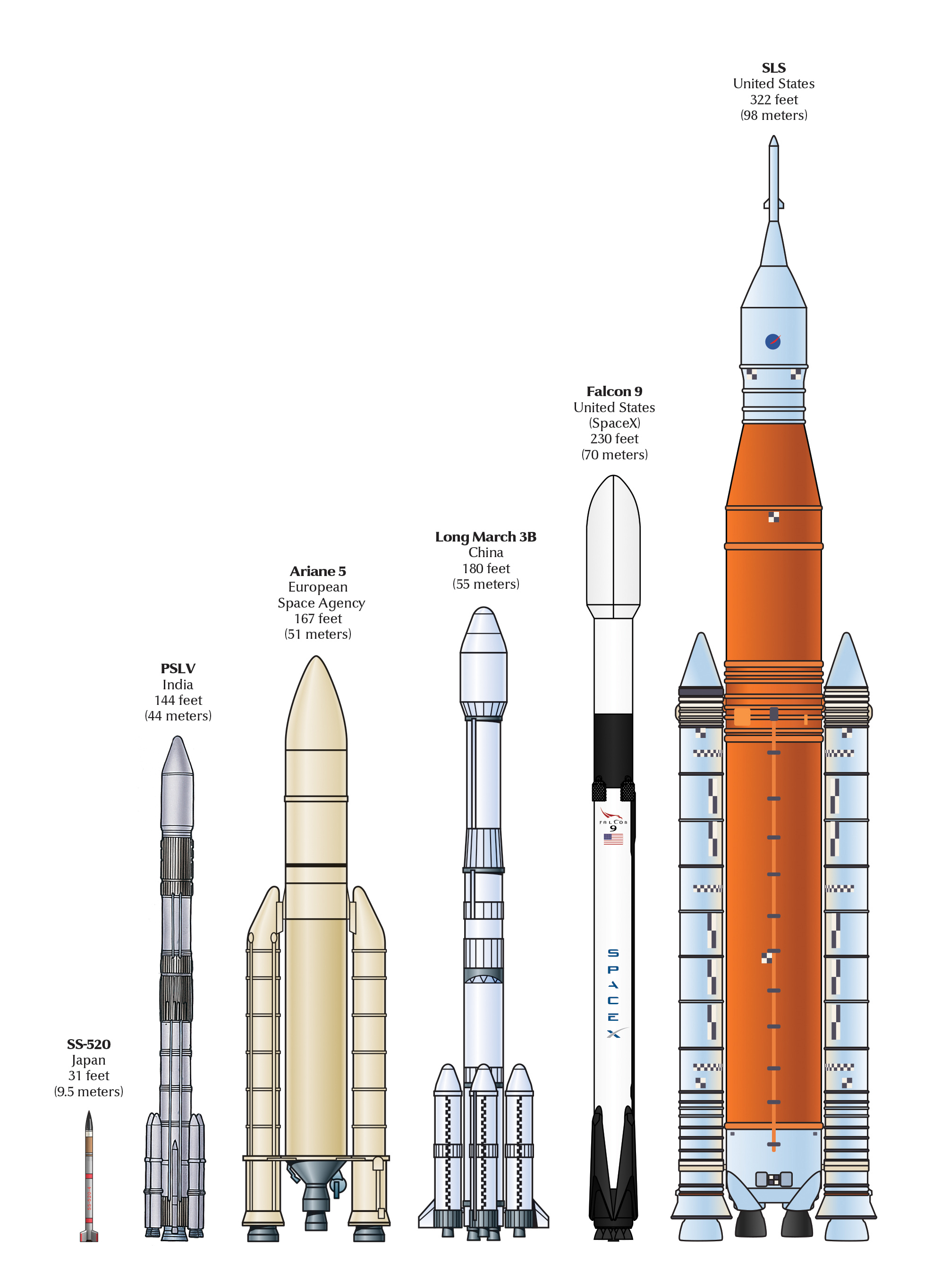Indian Space Research Organisation (ISRO) is a government organization that oversees much of India’s space program. ISRO designs and operates satellites, space probes, and launch vehicles (the rockets that carry satellites into space). Various ISRO spacecraft have visited Earth’s moon and Mars.

India’s first satellite, the scientific satellite Aryabhata, was put into orbit by the Soviet Union in 1975. ISRO’s first successful domestic launch was of the satellite Rohini in 1980. Rohini’s mission was to measure the in-flight performance of the rocket, the SLV-3, that launched it.
ISRO’s lunar exploration missions have orbited the moon and landed on its surface. ISRO’s first moon mission, Chandrayaan-1, launched in 2008. Chandrayaan-1 released a probe that deliberately crashed into the lunar surface. The debris kicked up by the probe was analyzed by Chandrayaan’s science instruments. Chandrayaan-2 launched in 2019. ISRO lost contact with Chandrayaan-2’s lander and rover before they reached the surface. However, the mission’s orbiter operated as planned, taking photographs and measurements of the moon. In 2023, India became the first country to land a spacecraft near the moon’s south pole when ISRO’s Chandrayaan-3 mission successfully deployed a lander.

ISRO has also carried out a successful Mars mission, called the Mars Orbiter Mission or Mangalyaan. Mangalyaan launched in 2013 and entered orbit around Mars in 2014. India thus became the first country to achieve Mars orbit on its first attempt. The mission, which cost about $75 million, was the least expensive Mars mission ever launched at that time. Mangalyaan was chiefly a test of space technology, but carried a camera and other scientific instruments to collect data about Mars. The orbiter operated until it ran out of power in 2022.

India operates satellites for communications, meteorology (the study of weather conditions), and remote sensing. Remote-sensing satellites gather information about the surface of Earth. Such information helps India’s researchers estimate crop yields, assess flood damage, and study regions drained by river systems. ISRO’s launch vehicles include the GSLV (short for Geosynchronous Satellite Launch Vehicle) and the PSLV (short for Polar Satellite Launch Vehicle).

ISRO plans to develop future missions to Mars and Venus. The agency has also announced plans to develop vehicles that can carry astronauts into space. ISRO occasionally collaborates with other space agencies, including the European Space Agency (ESA), the Japan Aerospace Exploration Agency (JAXA), and the United States National Aeronautics and Space Administration (NASA).
ISRO was established in 1969 and brought under India’s Department of Space in 1972. ISRO’s headquarters are in Bengaluru. India launches its rockets from the island of Sriharikota in the Bay of Bengal. Centers operated by the Department of Space include the National Mesosphere-Stratosphere-Troposphere Radar Facility, where scientists conduct atmospheric research; the National Remote Sensing Agency; and the National Natural Resources Management System.
See also Space exploration.
